If you’re suffering from thyroid disease, deep breathing and calming yoga poses can help ease symptoms.
Your thyroid is important. This two-inch long, butterfly-shaped gland in front of your neck is part of the endocrine system and acts as the control center for your body.
The thyroid uses iodine from the food you eat to produce, store, and secrete two different hormones: thyroxine (T4) and triiodothyronine (T3). These hormones travel through your bloodstream and reach almost every cell in your body, regulating your brain, heart, muscles and other organs. They also help the body use energy properly, determining how the body breaks down food and controlling metabolism.
Are you struggling with a Thyroid condition? We’ve created a FREE guide that shows you how you can heal your thyroid.
Click here to get your FREE copy of our Thyroid Guide!
An estimated 20 million Americans have some form of thyroid disease, and up to 60 percent of those with it are unaware of their condition. Women are also five to eight times more likely to have it then men. (1) Scary stuff.
Luckily, certain yoga poses can help compress and stimulate the thyroid, bringing needed circulation to the area to help keep your gland working at optimal levels.
Common Thyroid Disorders
Even when the thyroid is off just slightly, you’re likely to feel it. Your body is supposed to create a certain amount of hormone, and having too much or too little of these hormones can cause a host of symptoms. Hypothyroidism is when the body underproduces thyroid hormone, and hyperthyroidism sufferers have an excess of these hormones.
Signs & Symptoms of Hypothyroidism:
- Fatigue
- Cold intolerance
- Weight gain
- Depression
- Constipation
- Dry skin and coarse or brittle hair
- Joint and muscle pain
Signs and Symptoms of Hyperthyroidism:
- Nervousness and anxiety
- Insomnia
- Heat intolerance/excessive sweating
- Weight loss
- Hair loss
- Hand trembling
How Yoga Helps
Lucky for us, studies show that adding a consistent yoga practice to regular thyroid treatments are effective in treating thyroid problems. (2, 3)
Studies show Hatha yoga in particular can help bring thyroid hormone production back into balance. This includes yoga poses, breath work, symbolic hand gestures, and bandhas, or “body locks”, used to contract parts of the body in order to redirect energy. (4, 5)
Certain pranayama (breathing) exercises like Ujjayi are particularly beneficial, as they stimulate the reflex pathways of the throat to activate the thyroid gland.
Another study found that consistent yoga sessions are effective in managing disease-related symptoms in those with hypothyroidism. (6)
Gentle Yoga Routine for Thyroid Balance
Use this yoga routine to ease symptoms associated with both hypothyroidism and hyperthyroidism. All you need is a yoga mat and blocks.
Tip: Always check with your doctor before beginning any type of yoga or exercise routine.
Alternate Nostril Breathing | 8 breaths
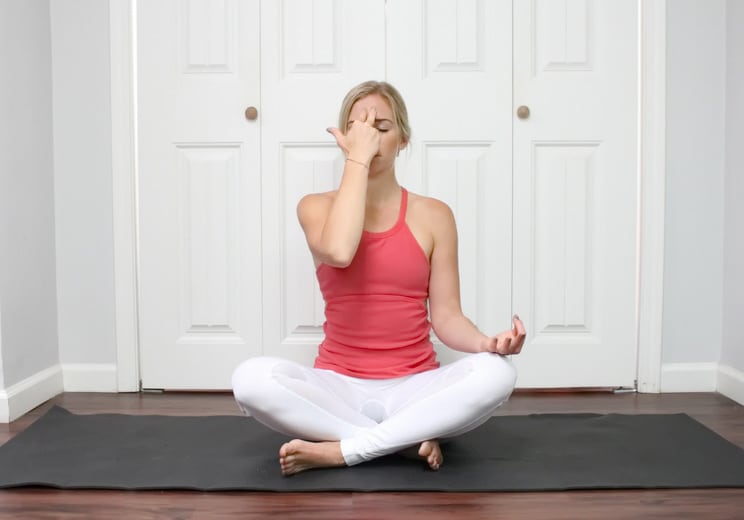
- Start in a comfortable seat with your legs crossed. Place your left palm face up on your left thigh with your index finger and thumb touching.
- Place your right index and middle fingers between your eyebrows. Position your thumb and pinky finger over your nostrils.
- Plug your right nostril and take a slow inhale through your left nostril. Pause, then plug your left nostril and exhale through your right.
- Reverse the nostrils again by inhaling through the right nostril and exhaling through the left. That is one round.
- Continue your alternate nostril breathing for seven more rounds.
Jalandhara Bandha | 5 reps
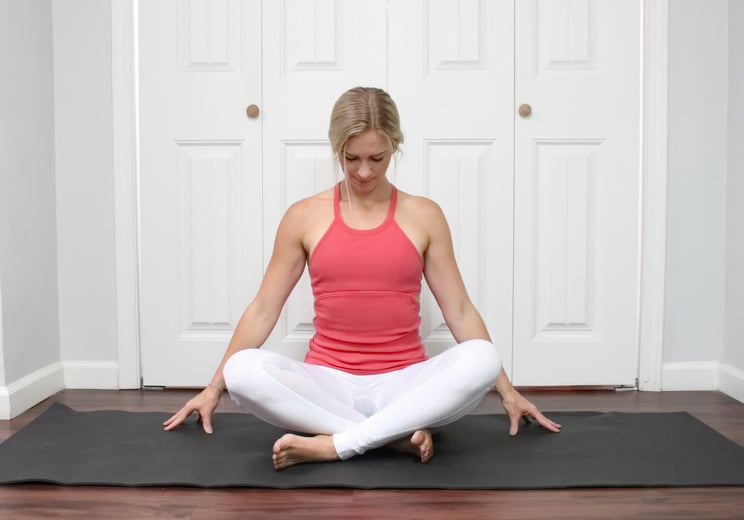
This type of breath work squeezes the thyroid gland, so that when released there is increased circulation to the thyroid and better function.
- Sit up tall in a comfortable, crossed-legged seat. Straighten your arms out to the sides and tent your fingertips on the ground.
- Take a deep inhale, then tuck your chin up and in, simultaneously drawing the chin and the sternum up towards one another. Lengthen the back of your neck and continue sitting up tall.
- Hold for a moment, then lift your chin back up to a neutral position before releasing the breath.
- Repeat five times.
Ujjayi Breathing | 8 breaths
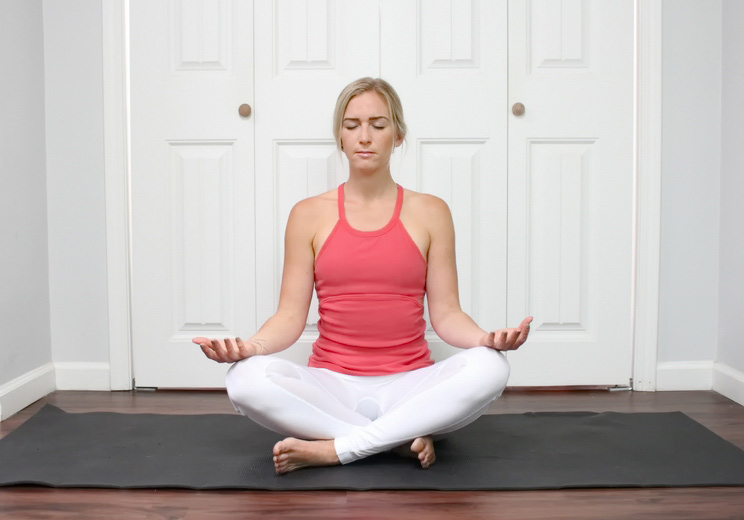
- Begin seated with legs crossed and palms facing up on your thighs.
- Seal your lips closed and place the tip of your tongue on the roof of your mouth. When you do this, you should feel a slight constriction in the back of your throat.
- Begin to breathe slowly in and out of the nose. You should feel a textured sensation as you breathe, and your exhales should be audible.
- Continue this slow, deep breathing in and out through your nose. Focus on this breathing for eight breaths, then continue this breath as you practice your yoga poses.
Shoulder Stand | 8 breaths
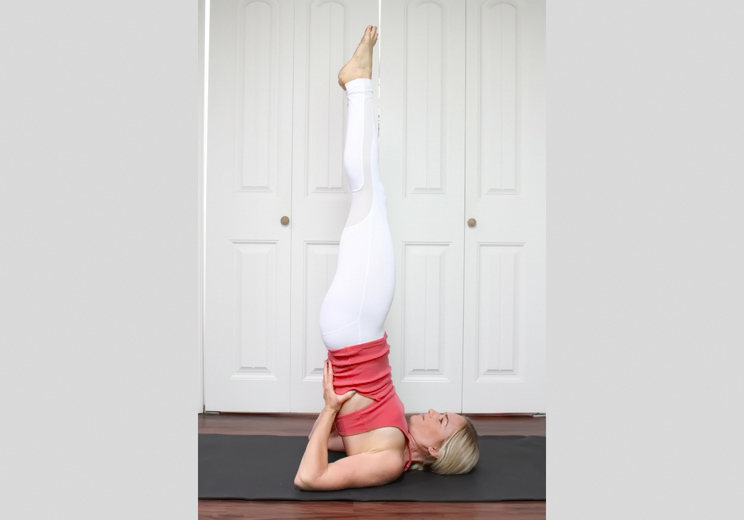
This pose applies pressure to the thyroid gland to help improve circulation and squeeze out any stagnant secretions.
- Begin lying on your back with your legs straight up in the air. Reach your arms down alongside your body and engage your abs.
- On an inhale, press into your palms and lift your hips off the ground, reaching your toes back behind your head to come into a modified plow. Use your hands to support your lower back.
- Lift your legs straight up towards the sky on an inhale, reaching up through your toes. Work towards making a straight line with your body.
- Hold for five to eight slow ujjayi breaths.
- Slowly lower back down one vertebrae at a time.
Modified Shoulder Stand
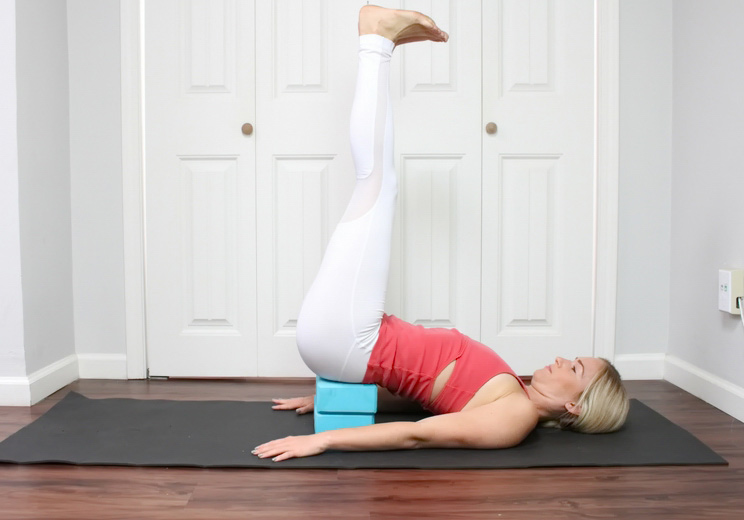
- Begin lying down on your back with your knees bent and your feet on the ground, hip-width distance apart.
- Reach your arms down by your sides and press your palms into the earth. Lengthen the back of your neck. Then, inhale to lift your hips up towards the sky to come into a bridge pose. Slide one block or two stacked blocks underneath your sacrum and rest your hips back down on the block(s).
- Inhale to reach your feet up towards the sky, straightening your legs and flexing your feet. Hold for eight to ten breaths.
Leg Lock Pose | 8 breaths
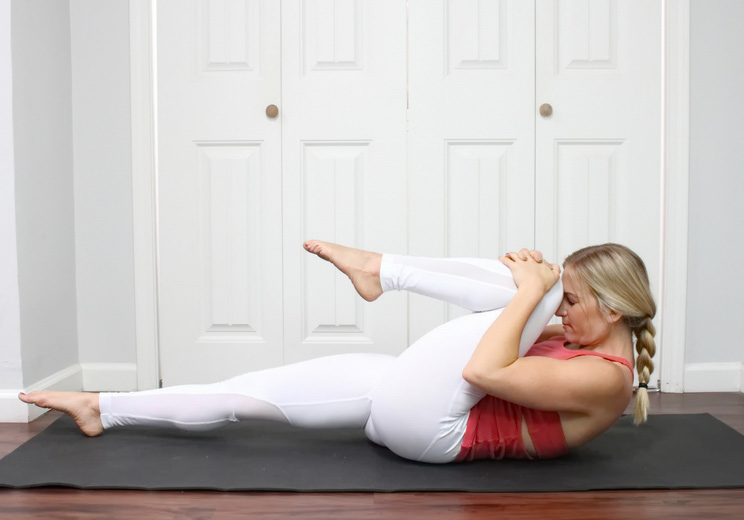
- Begin lying down on your back with your legs straight out in front of you. Point your toes.
- Bend your right knee into your chest and interlace your hands around the top of your right knee.
- Then lift your shoulders and upper back and tuck your chin to your chest as you try to hug your knee towards your forehead.
- Hold for five to eight ujjayi breaths, then release and switch sides.
The Psychic Union Pose | 8 breaths
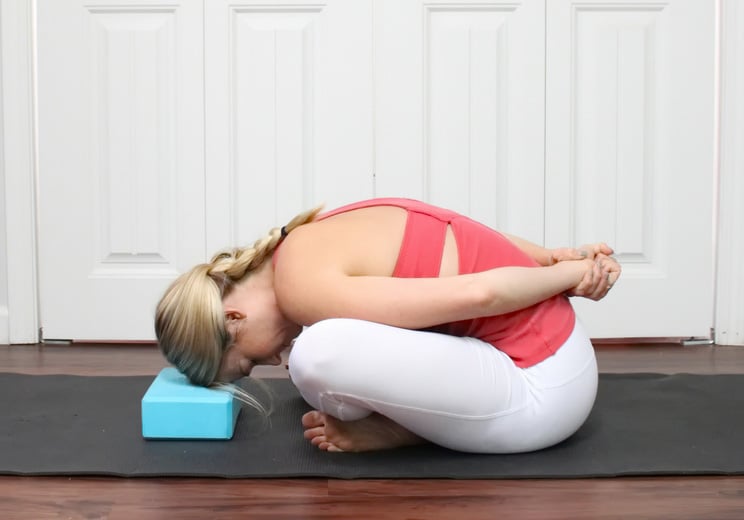
- Start in a crossed-legged seat on your mat.
- Sit up tall, then walk your hands out in front of you to fold over your thighs. If your forehead doesn’t reach the ground, place a block under it.
- Reach your arms behind your lower back and clasp one wrist with the other hand.
- Close your eyes and hold for eight slow breaths.
The Shoulder Pose | 8 breaths
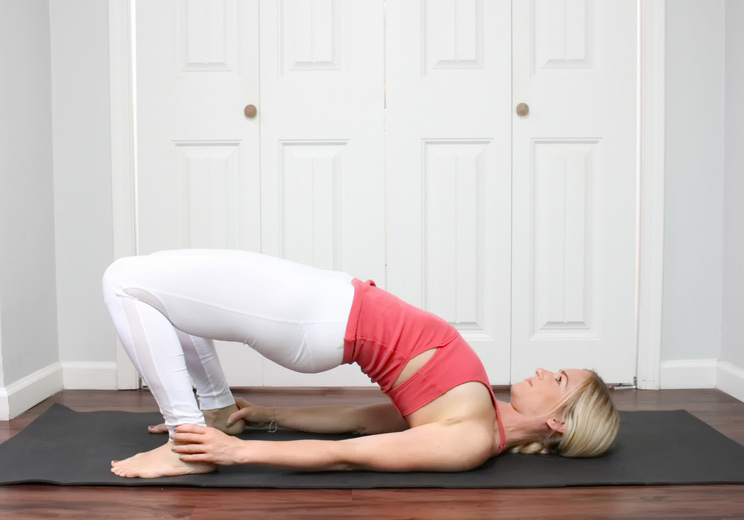
- Begin lying down on your back with your knees bent and your feet hip-width distance apart on the mat. Reach your arms down by your sides and press your palms into the ground.
- Lengthen the back of your neck and then inhale to lift your hips up towards the sky coming into a bridge pose. Tip: If this feels intense, then you can stop here.
- Next, shimmy your shoulders under your shoulder blades and walk your feet closer to your hands until you can grasp your ankles with your hands. Hold for 8 ujjayi breaths.
Camel | 8 breaths
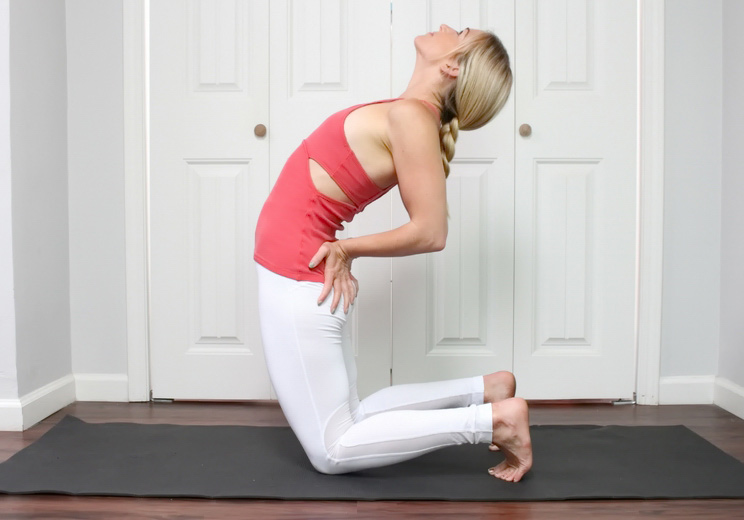
- Begin kneeling on your mat with your knees hip-width distance apart and your toes tucked under.
- Place your palms on your lower back so that your fingers point down. Engage your abs, quadriceps, and inner thighs.
- Take an inhale and press your palms down into your lower back as you lift your heart up towards the sky. Keep your hips stacked over your knees the whole time as you walk your gaze back along the ceiling, deepening the backbend. Allow the chin to lower back as much as is comfortable in your neck (to open up the throat).
- If you have a neck injury or this is uncomfortable for you, keep the chin tucked instead.
- Hold for five to eight breaths, then use your abs to lift you back up.
Inverted Pose | 10 breaths
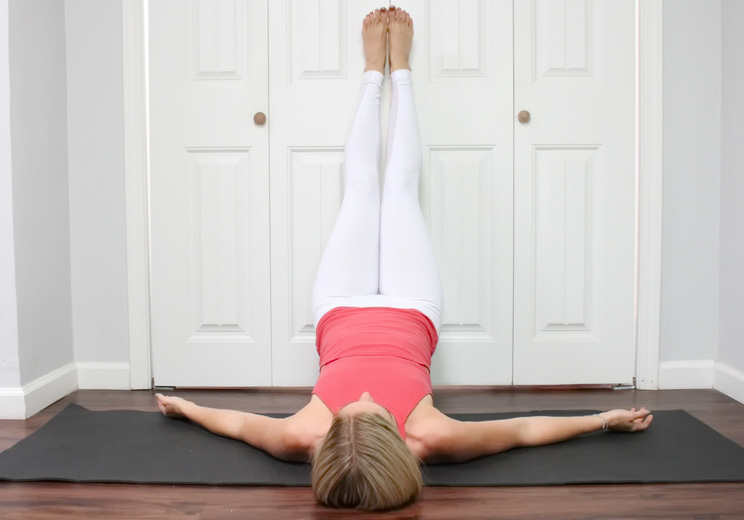
- Begin with one or two blocks off to one side. Sit next to a wall, then roll back and slide your legs up the wall.
- Bend your knees and press your feet into the wall to lift your hips. Slide one block or two stacked blocks underneath your sacrum.
- Extend your legs straight up the wall. Spread your arms out wide by your sides with your palms facing up.
- Close your eyes and find a light ujjayi breath. Hold for 10 breaths.
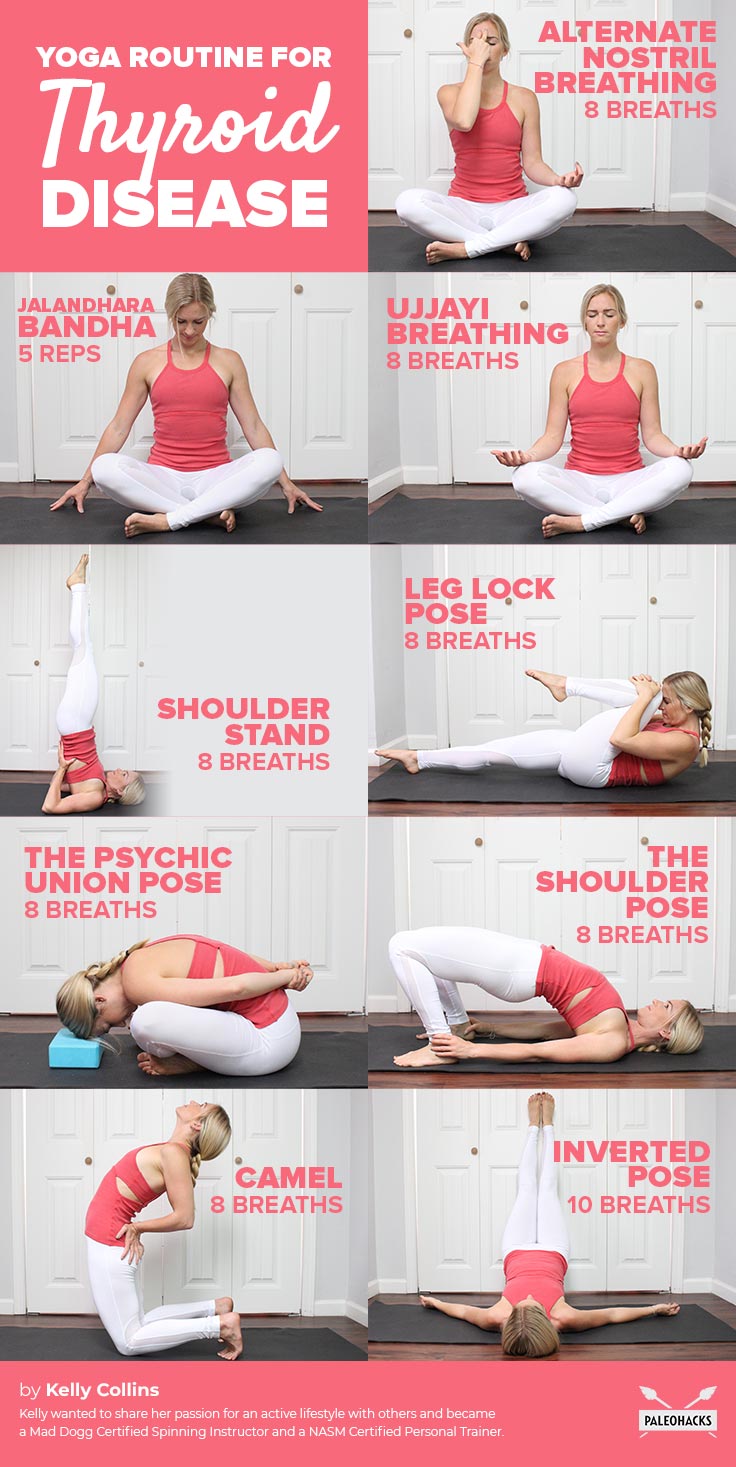
(Your Next Workout: Yoga for Osteoporosis – 9 Simple Poses to Reverse Bone Loss


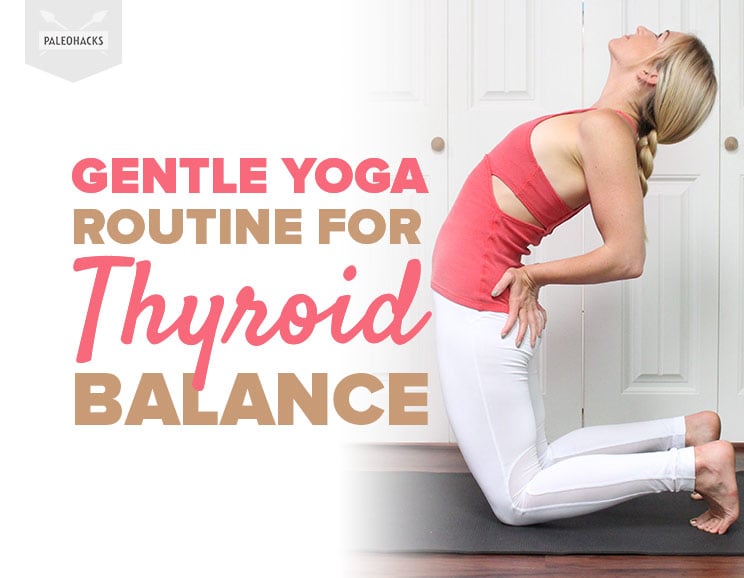
 Copycat Starbucks Keto White Drink
Copycat Starbucks Keto White Drink
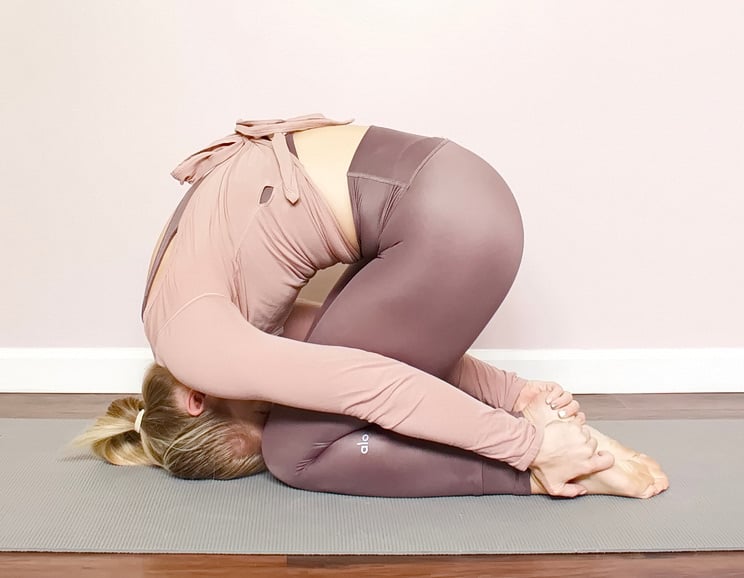
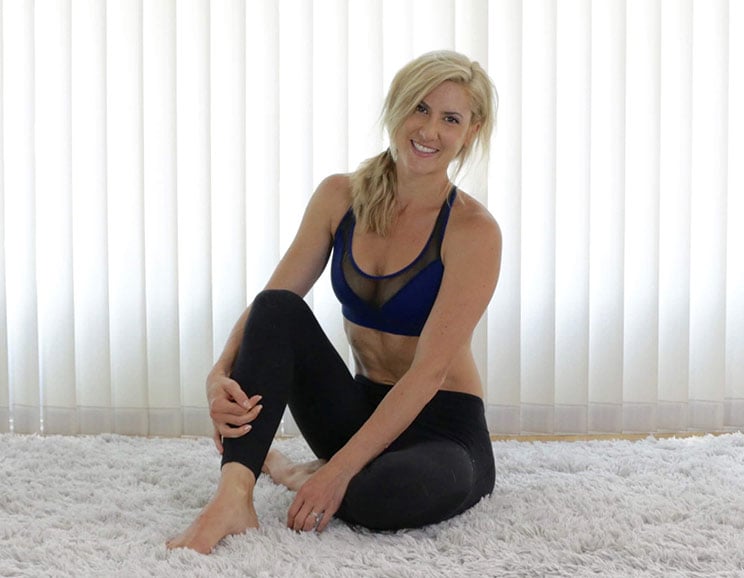
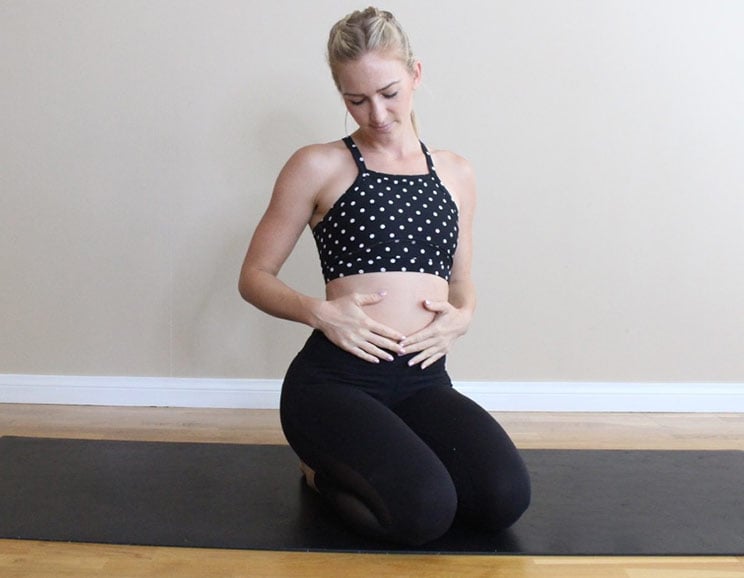
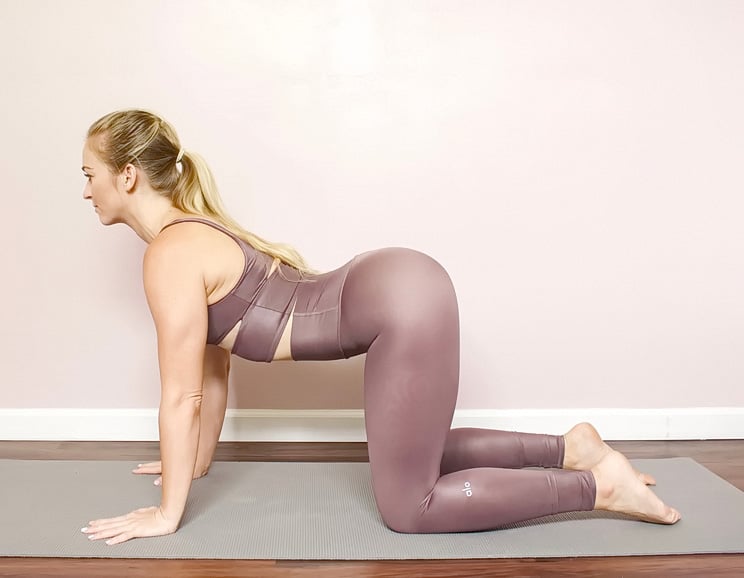
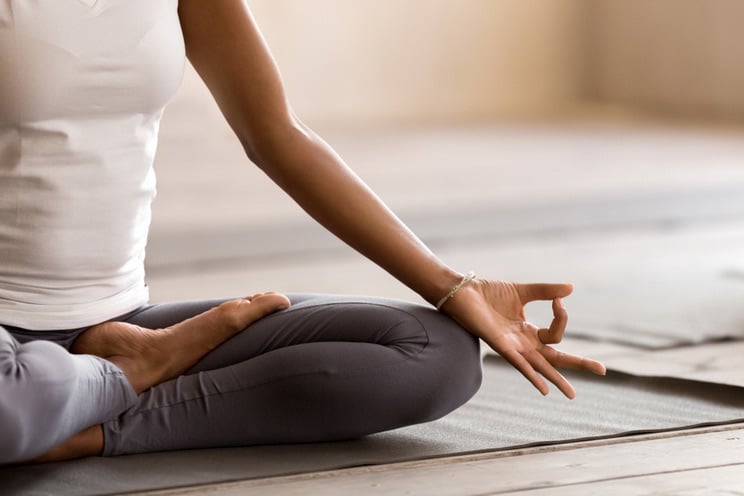
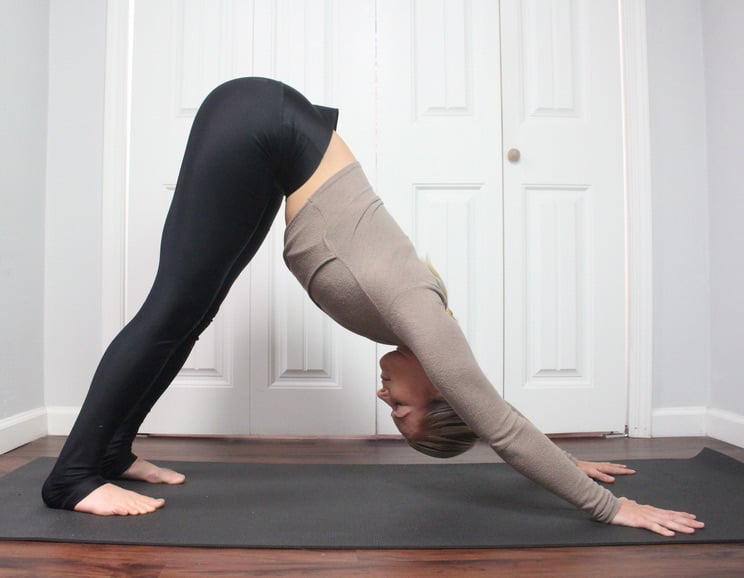
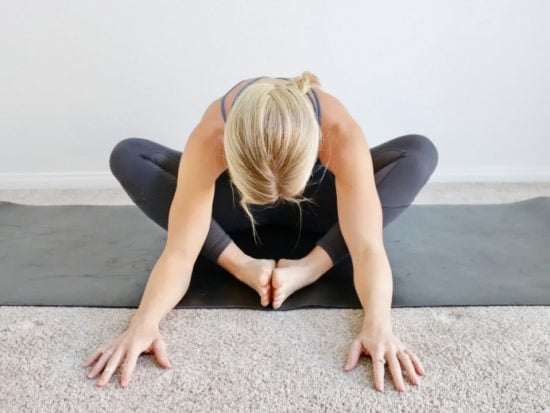
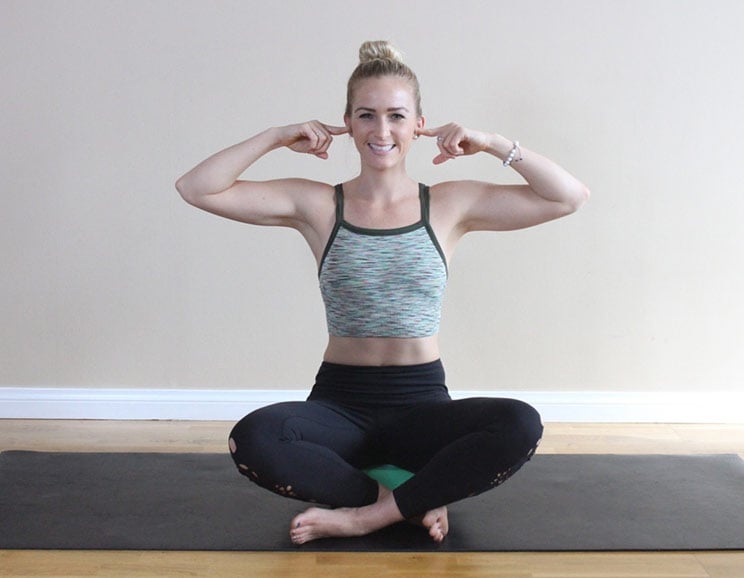
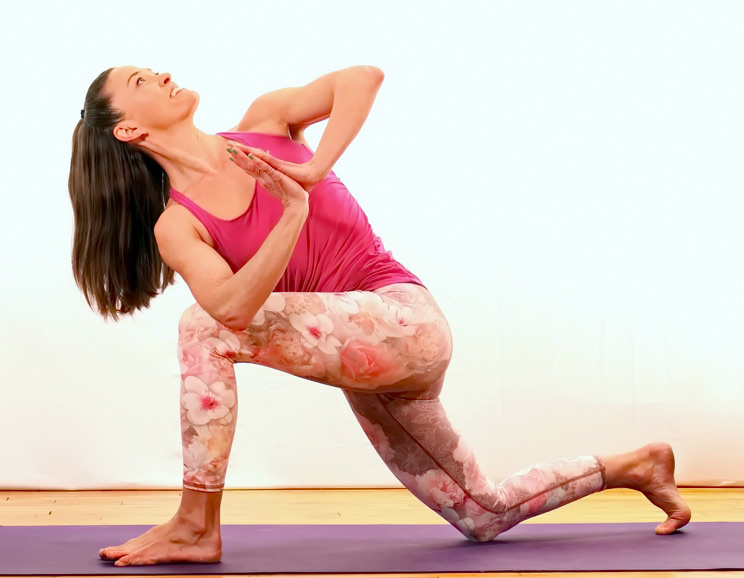
Show Comments